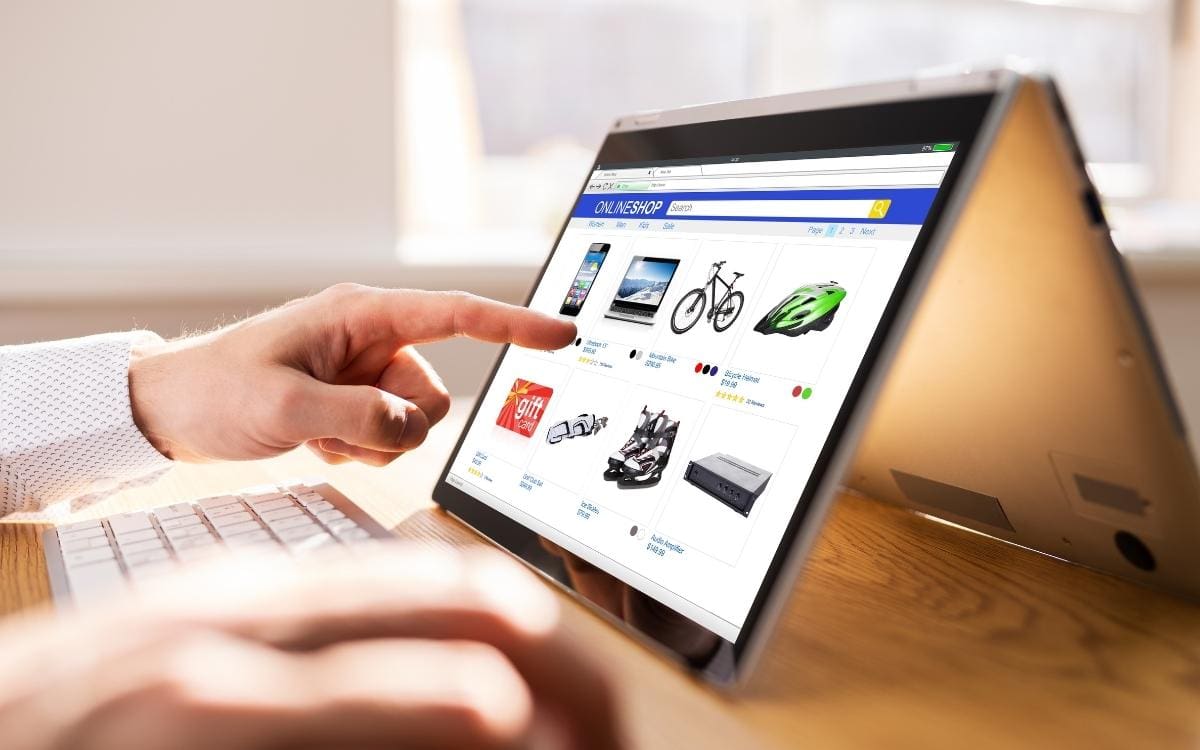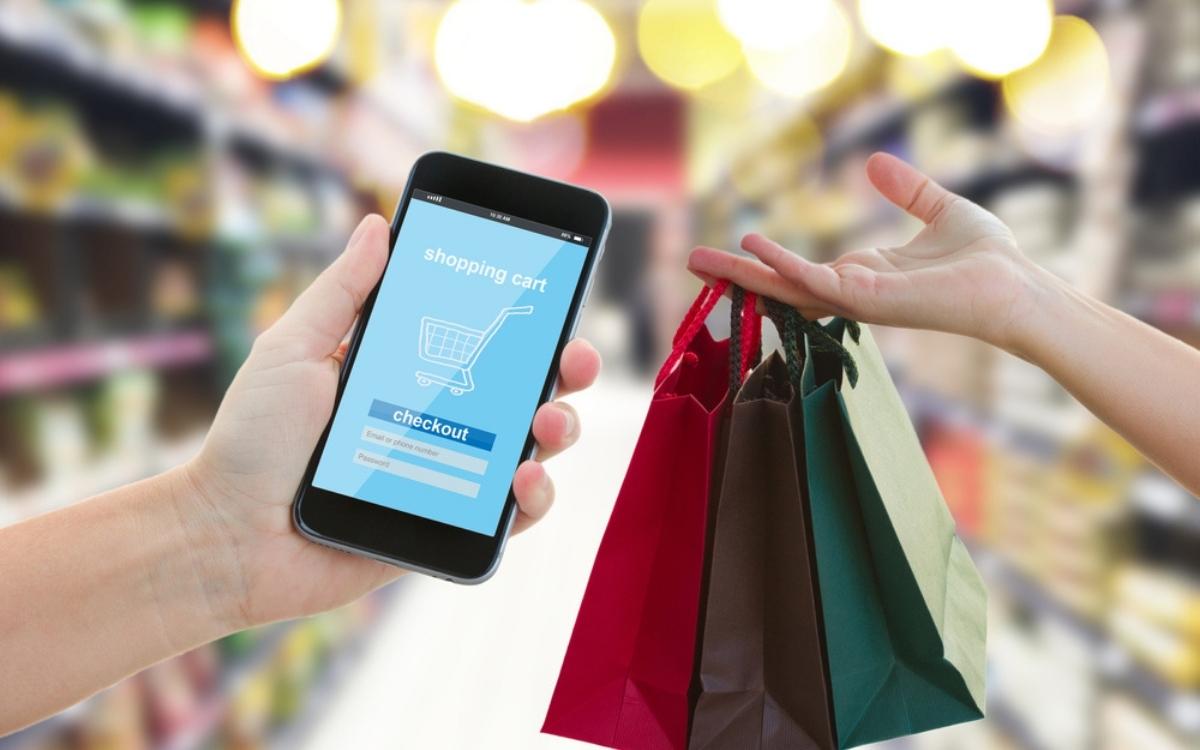Ecommerce for retail: everything you need to know to implement it successfully
Nowadays, the retail sector cannot afford to stay offline if it wants to reach its customers. El ecommerce for retail allows companies to reach new markets and gain brand recognition even before opening a physical store.
For retailers, it is a great business opportunity to sell more and have more customers, in a type of commerce that has no borders and connects with new consumer habits.
If you too want to take advantage of the growth of e-commerce, follow this article to learn how to implement your ecommerce and increase sales for your business!

Ecommerce For Retail
What is retail ecommerce and what are its advantages?
Ecommerce refers to any business that is carried out on the Internet, whether it is the purchase and sale of goods or services, or the transfer of money and data to complete transactions.
Retail ecommerce refers to the sale of products and services through a company's website to the final consumer.
Advantages of ecommerce for the retail sector
Some of the advantages of ecommerce for retail They are:
Reduced establishment costs
Launching an online store is much less expensive than opening a physical store.
You are not required to provide a point of sale, pay rent or hire multiple workers. Marketing and advertising campaigns are also inexpensive.
In addition, the online portal is computerized and automated, saving a significant amount of money.
Scalability without geographical limitations
Geographic boundaries become irrelevant when doing business through an online store.
Being online eliminates the need to open a new store in a different location, since you're already connected to a global market.
You can sell your products to online buyers around the world. It's not restricted to shoppers within walking distance of a physical location.
24/7 sales 365 days a year
When you sell online, your business is open 24/7/365. Even if your customer service is asleep, automation ensures that the rest of the sales process always flows and that consumers can buy any day, any time.
Personalized user experience
Tu ecommerce for retail allows you to provide users with a unique and personalized shopping experience.
By providing ease of purchase, with good security and in a friendly environment, they help you achieve a higher number of sales and more satisfied customers.
Flexibility in data testing and measurement
Web analytics is a real gift for e-merchants. It is enough to study it and then know down to the smallest detail what customers are interested in, at what stages they abandon purchases, from what sources they arrive at the website of your online store.
And all of this is due to automation, which can be achieved offline with great difficulty or not at all.
The impact of e-commerce for the retail sector in Latin America
Online shopping was already driving customers away from physical stores around the world when the pandemic hit, but COVID-19 gave consumers a powerful push toward e-commerce.
In Latin America, the proportion of people who shop online, or the penetration of e-commerce, increased to levels that the region was not expected to reach for 10 years.
That said, the region was starting from an extremely low base and we still see a long path of growth ahead.
Latin America has a great opportunity for growth both in the number of new digital buyers and in how much those online shoppers spend, on average.
However, for companies to achieve increased user engagement and purchase frequency, there must be a continuous focus on improving the fulfillment journey: the set of operations that follow the receipt of the order and include collection, packaging and delivery.
7 types of retail that should sell through an ecommerce
One of the ways in which companies in the retail sector have seen greater market share and greater commercial success is through the increase in e-commerce and Internet sales.
With a well-implemented ecommerce, these companies benefit from the advantages it offers them:
- Supermarkets: an ecommerce allows supermarkets to reach a larger number of people regardless of the geographical area where they are.
- Pharmacies: 24-hour home delivery of health products, through an e-commerce, gives added value to pharmaceutical companies.
- Household appliances: stores specializing in household appliances can offer their customers a wide catalog with the characteristics and properties of the items through their website.
- Beauty and cosmetics: an ecommerce allows you to provide personalized attention to customers and give different fashion and beauty tips. This improves the customer experience
- Fashion and Luxury: With specialized notes and news, fashion and luxury companies provide their customers, through their e-commerce, with all the necessary information to be updated on these issues and to make it easier to choose products.
- Home and Lifestyle: An e-commerce that shows the latest trends in home decoration and that also offers and sells these products, gives this sector a greater projection.
- Cleaning: All retailers in the cleaning industry benefit from reduced costs by not needing a physical store to offer and sell their products and facilitate delivery to their customers.
How to implement a successful ecommerce for your retail store?
The successful implementation of any e-commerce business consists of several key stages and components.
Learn about the steps you must follow to implement a successful ecommerce for your retail store:

Ecommerce For Retail
Stage 1: Structure and planning of your ecommerce
Structuring and planning your ecommerce requires you to think critically about every important component of your online store, allowing you to identify and avoid major problems before you start.
At this stage, it's important to consider the following key points:
1. Define the value proposition of your ecommerce
When you start planning your ecommerce, you should be clear about your value proposition. That is, knowing why you are going to differentiate yourself from others so that people prefer to buy from you and not from the competition.
2. Plan the profitability of the digital sales channel
Once you are clear about the value proposition of your ecommerce, you need to carry out a study of the profitability of selling your products or services in digital commerce.
Maintaining the profitability of e-commerce is a journey that goes round and round across the entire organization, evolving along with the changing needs, beliefs and behaviors of customers.
While it may seem simpler to examine and address each business function individually, true optimization requires a holistic approach, with a plan that allows efforts to be efficiently linked to profits.
3. Choose the platform to develop your ecommerce
E-commerce platforms are essentially software applications that allow businesses to execute complex functions on both the front-end and the back-end. This includes CRM, inventory management, mobile commerce, web design, and warehouse compliance.
An e-commerce platform is the backbone of an online retail company, so your choice will depend on the needs of your business.
The best e-commerce platform is the one that successfully delivers the results and objectives you've set for yourself; not the most popular one on the market.
4. Choose the payment gateway for your online store
When you start an e-commerce business, you need to think carefully about how to accept online payments to meet the needs of users and manage the cash flow of your business in a viable way.
The choice of the payment gateway is very important, since studies have shown that people can abandon the cart if the payment process is difficult.
5. Determine and/or adapt your logistics model for ecommerce
The term e-commerce logistics refers to all the processes involved in order processing between the e-commerce store and the end customer, both in terms of outbound orders and returns.
From order validation to shipping, issues of costs, deadlines and customer satisfaction come into play in electronic logistics.
That is why the logistics of ecommerce for retail is a key success factor to help you develop your online store and gain a comparative advantage in the market.
6. Organize the customer service area for the online store
Ecommerce customer service is how you assist customers with everything from making online buying decisions to solving problems, while creating a seamless customer experience across all channels and platforms.
One of the essential aspects of the success of a customer service department is the organization.
You may have an efficient process and a highly motivated team, but without organization, things are likely to fall apart.
Stage 2: Implementation and development of your ecommerce
The implementation and development of your ecommerce consists of all the steps related to launching, updating and maintaining your online store.
1. Define the digital production process
You must clearly define the entire process by which creative ideas and products are translated into a variety of digital media: websites, advertisements, rich media applications, emails, HTML, mobile and social media applications.
This way, the right messages are delivered through the right channel at the right time to the right users through images, videos and product descriptions.
2. Develop the web design of your ecommerce
It's important to create an impressive and functional e-commerce website design to ensure the success of your online store.
Keep in mind that the site must be visually attractive, in addition to having a good user interface, optimized for search engines, in order to increase conversions.
3. Structure the web catalog for your customers
A web catalog represents the main navigation bar of the store's website.
A well-structured catalog ensures that your products are found and accessible online and that you stay competitive.
It will also help you to be seen as a leader in your industry and will build trust between your brand and your ecommerce visitors.
4. Develop your site on the platform you chose
When choosing the platform for your website, the main factors to consider include functionality, familiarity, community, support, and cost.
Once you have chosen the right platform for your expectations and needs, develop your website taking into account the user experience
5. Integrate digital tools for ecommerce
E-commerce data integration tools link various programs, such as CRM and marketing automation systems, or store data in different databases.
These technologies allow you to keep up-to-date information about your customers and suppliers to make the right decisions in your ecommerce.
Improving customer service can help you build customer loyalty
The relationship with your customers forms the basis of your e-commerce business. By prioritizing relationships and attention with your customers, you can improve retention and increase brand loyalty.
More than ever before, customer service and support is a key part of the customer experience.
It's estimated that it costs five times more to attract new customers than it does to retain existing ones, so your brand's relationship with customers has a real impact on your company's results.
When you improve the comprehensive customer service of your e-commerce, it helps you maintain, nurture, and even equip customers to be lifelong fans of your brand.
Boost your ecommerce sales with Retail Marketing strategies
Launching an ecommerce for retail is only the first step in launching a successful online business; now you need to establish sustainable strategies to increase digital sales.
Learn about some of the retail marketing strategies that help you boost your sales
Create relationships with your customers through Omnichannel
An omnichannel approach offers a personalized and consistent shopping experience across multiple channels and devices so that shoppers can seamlessly switch between them and continue shopping from a different point of contact.
With an omnichannel experience, you can increase customer lifetime value, improve operational efficiency and optimize inventory turnover.
Improve your customer experience thanks to Big Data
The effective and successful delivery of the customer experience depends on data. Typically, companies collect this data to understand customer behaviors and to offer personalized offers on demand to make consumers happier
This collection of customer data can help you with market competitiveness, user productivity, sales revenue and, ultimately, customer experience.
Use Email Marketing to Attract and Reward Your Customers
Customer retention is crucial for the sustainable growth of your brand.
Email marketing allows for deeper personalization than most other marketing channels.
Email is a reliable way to make your customers feel valued and helps build strong emotional connections between customers and your brand.
Digital tools to improve your online retail
The following are some specific digital tools that will improve your retail marketing efforts:
Big Data
The importance of big data doesn't simply revolve around how much data you have.
The value lies in how you use it. By taking data from any source and analyzing it, you can find answers that streamline resource management, improve operational efficiency, optimize product development, drive new revenues and growth opportunities, and enable intelligent decision-making.
Heat maps
A heat map is a chart that allows you to visualize data in an analytical way.
They are mainly used to study how users behave in an e-commerce and the way in which the web is structured, which makes it possible to optimize the site.
Cross selling and Up selling
Cross selling is a strategy that offers a current or potential customer something that complements a product that the customer intends to buy or has already purchased.
Up selling or upselling consists of offering a customer a similar product, but usually more expensive than the one they intend to buy.
With upsells, you're not offering side products to complement your customer's initial purchase: you're offering an improved or premium version of the product they just agreed to buy.
CRM system
A CRM system allows you to manage the interactions of your customers with your website.
The objective of CMRs is to optimize interactions with your customers to increase your sales and revenues by connecting everything in one place.
Google Analytics
Google Analytics is a free web analytics service from Google. With this service, you can analyze all the details of the people who visit your site.
Software for home management
Home management software automates the tracking of the number of sales, orders, inventory and the delivery process.
Controlling all functions related to managing customer orders allows your team and customers to track the process and analyze its efficiency from start to finish.

Ecommerce For Retail
Main challenges faced by retail ecommerce and how to solve them
Retail ecommerce has been growing at an incredible rate, as have the challenges of online sales.
These are the main challenges you face, learn how to solve them
Personalization in the customer experience
Customer experience is key to a successful e-commerce website.
There are several ways to improve the user experience. The most important thing would be to have a clean and simple website so that buyers can easily navigate.
The next point would be to have clear CTAs (calls to action) so that the buyer knows exactly what to do.
Improve home delivery logistics
With a successful ecommerce, you could be flooded with more orders than you're prepared to handle on your own.
In this case, outsourcing order fulfillment and e-commerce shipping can ease your workload and optimize the customer experience.
For home delivery fulfillment, it is advisable to outsource to a third-party company whenever possible for greater efficiency.
Digital commerce data management and analytics
Do you feel like you're drowning in a sea of information? You are not alone. Many ecommerce owners struggle to figure out exactly what numbers to track and measure.
While there are certain e-commerce metrics such as transactions, revenues, conversion rates, that you should keep track of, some will be unnecessary in your business depending on your objectives.
If a metric doesn't show how you're getting closer to success, it's probably not worth looking closely.
3 great examples of Retail Ecommerce in Ecuador
These stores in the retail sector in Ecuador make the most of all the advantages of e-commerce to position themselves in the market and increase their revenues.
1. Aki Supermarkets
The AKI Supermarket e-commerce provides its customers with a well-structured product catalog, which provides its customers with a satisfactory experience, from the moment they start the purchase until they receive the products.
2. Medicity Pharmacies
The Medicity Pharmacies website is fully integrated with mobile applications, allowing customers to access it from their mobile devices.
It provides its customers with discounts and special promotions that help build customer loyalty, increasing their sales.
3. By Prati
De Prati structures its e-commerce as a department store where customers can choose their products according to the category they are looking for.
It's a simple and clear site for users who want to make their purchases from the comfort of their home.
How to boost your retail ecommerce with Picker?
With Picker you can connect our API to your ecommerce, app or other type of system. This way you optimize and enhance your site, providing your customers with a comfortable and satisfying experience.
You also offer safe and reliable delivery, with a reduction in logistics costs and a shorter delivery time.
By integrating your site with Picker, your customers will receive a notification via SMS/email/WhatsApp and in this way they can track orders.
Conclusions
Implementing a successful retail ecommerce is not an easy task. Fortunately, there's a lot you can do to improve your chances of boosting sales and keeping your customers coming back for more.
Understanding how ecommerce is configured can help you steer your growth plan in the right direction and position yourself in front of the right market.
The fact is that the accessibility and convenience provided by e-commerce is a great way for companies of all sizes to grow beyond their physical locations to achieve greater success.










